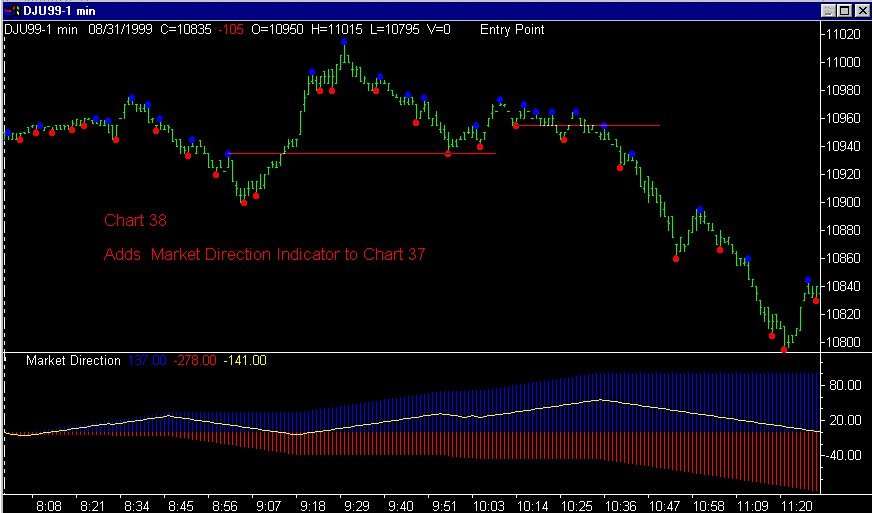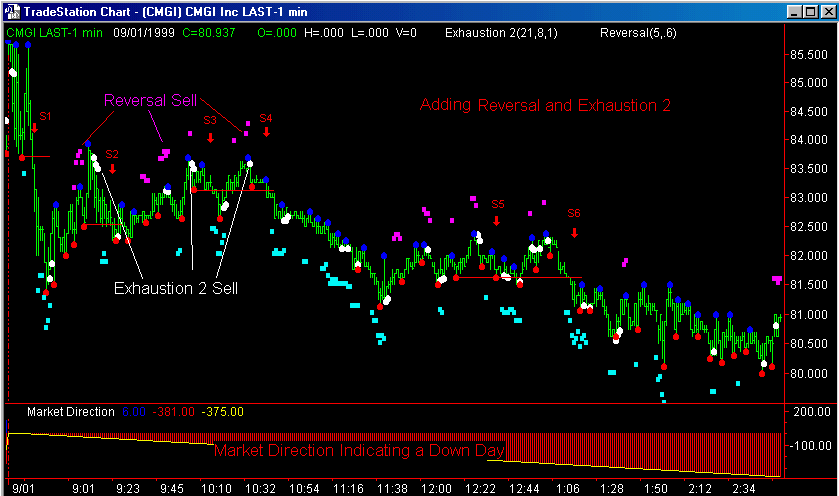Support Resource Center
Chart 38
JFC Entry Point Indicator

Chart 38 above adds the JFC Market Direction Indicator to Chart 37.
For a detailed explanation of the use of these two tools along with
the JFC Cluster Indicator and JFC Directional Day Filter Indicator please go to Chart
37.

Chart 38 A
Chart 38 A displays the JFC Entry Point Indicator and the JFC Market Direction Indicator. Market
support is marked by small red
dots beneath the price bars while market resistance
is depicted by small blue dots above the price
bars.
The JFC Market Direction is indicating a downtrend
for the day as noted by the red histogram.

Chart 38 B
During the video presentation I mentioned that on the above chart of CMGI
there were several sell signals which would be designated by the JFC Indicator
Package. For a change of pace and to demonstrate the use of some of the
other tools in the box I have used the JFC Reversal and JFC Exhaustion 2
indicators on this chart to identify the various trading windows on this market
at this time.
Note that the JFC Market Direction Indicator
is telling us to only consider the short side of
the market today.
For review, note that the JFC Reversal Indicator will give an indication
that a current uptrend is exhibiting signs of exhaustion when the small
magenta squares begin to form above the price bars. When the magenta
squares cease plotting the exhaustion phase is complete and a
change in the market trend from up to down
is anticipated.
Also for review, recall that the small white dot presented by the JFC
Exhaustion 2 indicator shows up as an aid to the interpretation of the JFC
Exhaustion Indicator. The white dot confirms that the rapidly moving red line
associated with JFC Exhaustion has turned down on a closing basis and, thus, a
change in trend from up to down
can be expected.
The initial short entry, designated S1, came
early in the day following a JFC Exhaustion 2 Sell signal.
The sell signal at S2 was entered at 82.50 on
the sell stop placed at the support level by the JFC
Entry Point Indicator. A protective buy stop of at least $1.50 would have
been required to maintain this position.
The next 2 selling points, marked by S3 and S4,
emerged at a higher level, slightly above the 83.00 level. This point could be
used to either add to an existing short position or initiate a new short
position.
Between 12:30 and 1:30 Central Time there were two additional selling
opportunities which were set up and activated by the same indicator
combination responsible for the positions established earlier in the day. These
new short positions are designated R5
and R6.




